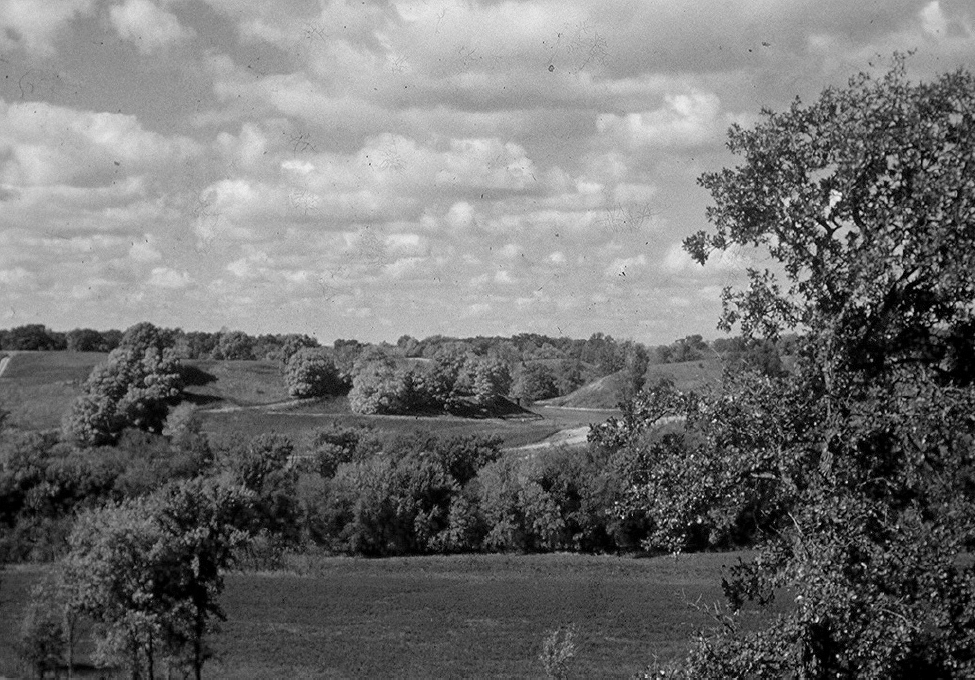
SRHS
Steamboat Rock Historical Society
THE EXTREME BORDER OF CIVILIZATION
How The Indians Got Here
The Indian that lived in the area surrounding what is now Hardin county, were of the Algonkian group, primarily the Sac and Fox tribes. The Algonkians came to Iowa from the East having first inhabited the regions of the St. Lawrence River and the Great Lakes country. They had left their previous hunting grounds because other Indian tribes forced them to move.
The most powerful group of Indians in the east were made up of the five Iroquois tribes, who were united in a permanent league or confederation, known in history as the Five Nations. There were other Iroquois tribes who refused to join the league. These unwilling tribes were considered enemies of the league and treated accordingly. Some of these tribes suffered such great losses at the hands of their kindred Iroquois to the point that they ceased to exist as tribes. The Hurons, were among this extinct group.
The Iroquois were fierce fighters , and waged war on all their neighbors raiding far to the east, south and west. Subjected tribes were forced to pay tribute. Captives taken in war were often tortured to death in the most horrible manner or, if they were permitted to live, they were made slaves.
There were Algonkian tribes all around the Iroquois, and the Iroquois were hostile to all for them. The Algonkians were able to successfully resist for a short while. But after the arrival of the Europeans, the Iroquois formed an alliance with the Dutch, and later with the English. The alliance with the English was never broken, even through the American Revolution, they remained steadfastly loyal to the British.
In payment for furs, the English gave the Iroquois utensils, tools, and firearms. Equipped with modern weapons, the Iroquois became a dreaded power among the other Indian tribes.
To offset this increased danger some of the Algonkian tribes allied themselves with the French and also traded furs for firearms. But neither the weapons or the French alliance could prevent the westward movement of the Algonkian tribes among which were the four historic tribes of Iowa; the Sacs and Fox, the Mascoutins and the Potawatomis.

In these contests it was always Algonkians and French against the Iroquois and English. Fox tribes, although they were Algonkians, always fought with the Iroquois and English because the French had sold firearms to the Chippewas who, though also Algonkian were traditional enemies of the Fox tribe.
A century later, the Sacs were on Green Bay in Wisconsin, and the Fox on the Fox River. This river was named for the Fox tribe. The Fox name had been given to the tribe by the French, when a Frenchman met a party of Indians who told him that they were of the Fox clan of their tribe. The Frenchman was unaware of the Indians social organization, and called the whole tribe by the name of Fox. The Fox called themselves Meskwakies (the name they still use today) or Red Earth People.
Having lost many of their warriors in their incessant wars with the French, the Fox were finally so reduced in numbers that they were forced to join in a permanent union with the Sacs. The two tribes however, remained distinct in their social organization.
After the fall of New France in 1763 the western Indians under the ruthless chief Pontiac of the Ottawa tribes, tried to stem the westward movement of the white settlers north of the Ohio River. This resulted in two years of barbarously cruel warfare, ending with the defeat of the Indians and the murder of Pontiac. Both the Sacs and the Potawatomis fought with Pontiac.
Even before Pontiac’s Conspiracy, as this was called, the Sacs and the Fox had begun a war with the Illinois tribes; Kaskaskias , Cahokias , Peorias , Moingwanas, Michiganis, and Tamaroas. These wars were continued until all of these tribes were nearly destroyed. The aggressors, the Sacs and the Fox, took possession of their land simply because they had the power to do so. The once powerful Illinois tribes ceased to exist as tribes, and the survivors joined other tribes. There are only a few of their descendants that remain today.
© 2020 Steamboat Rock Historical Society | All Rights Reserved
Powered by Hawth Productions, LLC